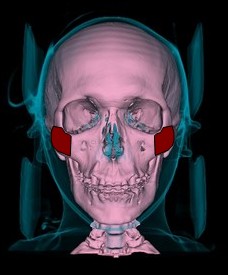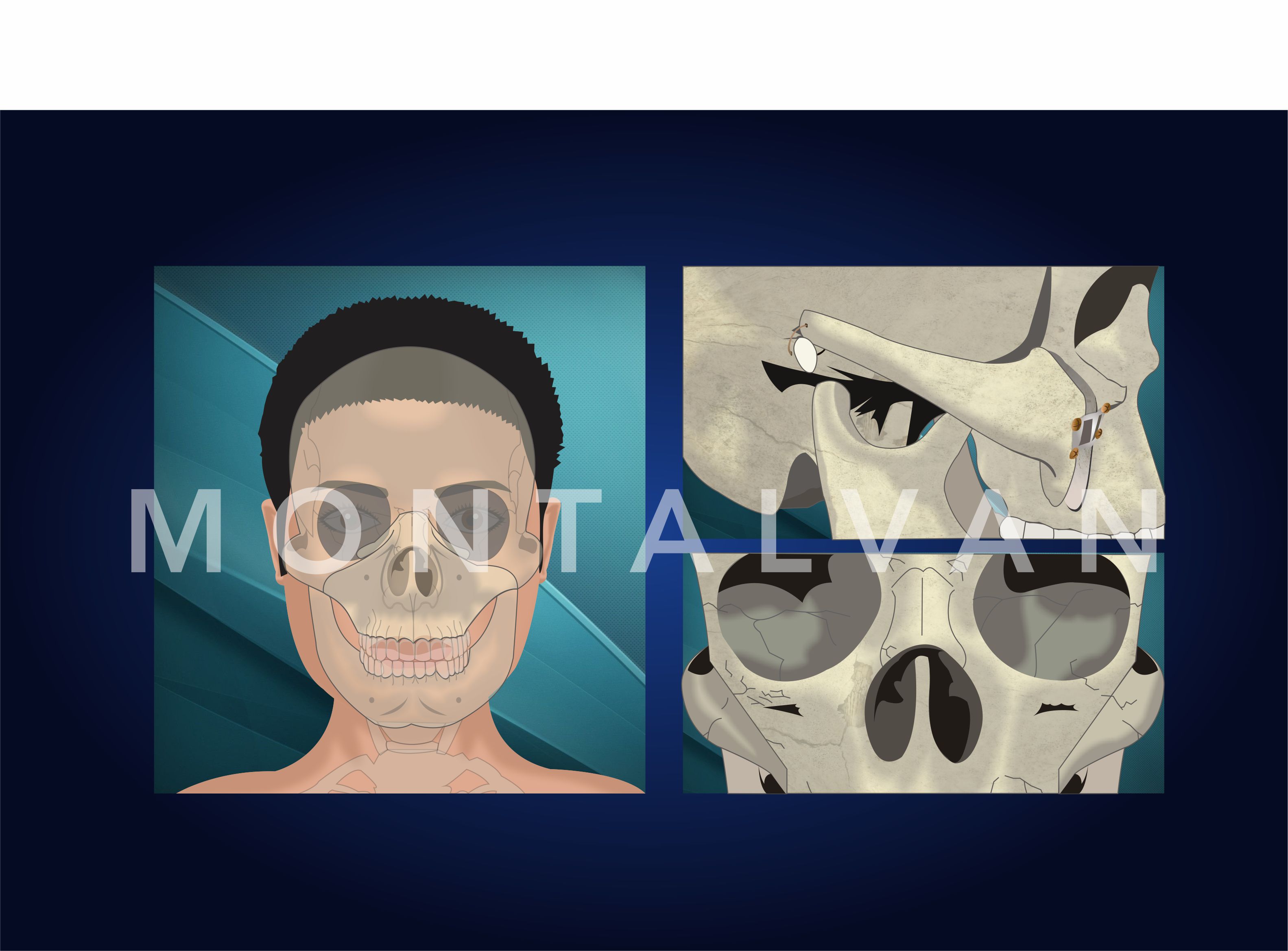Self-diagnosis
Your face is flat an wide. Your mid-face is specially wide.
When looking at in front, prominent high cheekbones make your face look eneven.
Only your cheekbones are seen when looking at from 45 degrees of the side.
Under your cheekbone looks dented and shaded.
Specifics
BONE STRUCTURE The goal of this surgery is to reshape your bones and narrow your face.
CHEEKBONE It’s the portion of bone located in the anterior and lateral part of your face.
FRONTAL CHEEKBONE refers to the protrusion of your cheekbone from the front view. In order to move this region inward, either your upper jaw or your cheekbone is excised to reduce the thickness. But the cheekbone is not very thick and there’s an empty space underneath, so shaving off the bone cannot reduce the protrusion enough to make a dramatic change in the face.
3-D Cat Scan showing high cheek bones. Information provided by this image test allows us to make the surgical planning for the individual surgery.
45º CHEEKBONE in this case, the curved area from the front to side of the zygoma is prominent. Aside from shaving this curved region, shifting the cheekbone inward can reduce the protrusion. Therefore, the cheekbone and the zygomatic arch must be cut first. After shifting it inward, the moved bone must be tightly fixed.
Cheekbone reduction surgery shifts the cheekbones inward narrowing the square face. Zygoma is shifted inwards to narrow the face. This cheekbone shifting is mandatory to attain a dramatic result.
SIDE CHEEKBONE the zygomatic arch on the side is either severely bent or protruding. The cheekbone must be moved to reduce the curve, so the cheekbone and the zygomatic arch must be cut first. After shifting it inward, the moved bone must be tightly fixed.
In order for the hard cheekbone to make a three-dimensional shift and be positioned inward, the front and posterior region of the cheekbone must be excised. After shifting it inward, the moved bone must be tightly fixed. This procedure has taken into consideration both safety and effectiveness of the surgery. In most cases, patients’ cheekbone accompanies a wide range of conditions, which requires the surgeon to combine several surgical techniques to maximize the effects. The degree to which the cheekbone looks inward can adjust the amount shift to be made through excision.
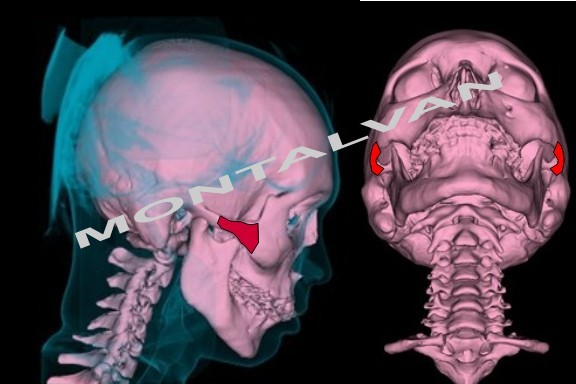
ARCH This region refers to the rear part of the cheekbone, which makes the face look wide from the front view and very bumpy from the side view because the frontal region of the ear is protruding. This part of the arch is cut near the sideburn region and the frontal cheekbone is also excised, making the entire cheekbone and arch move inward.
In most cases, both the body of the cheekbones and its arch are prominent. Therefore, surgical procedures on both parts are performed simultaneously.
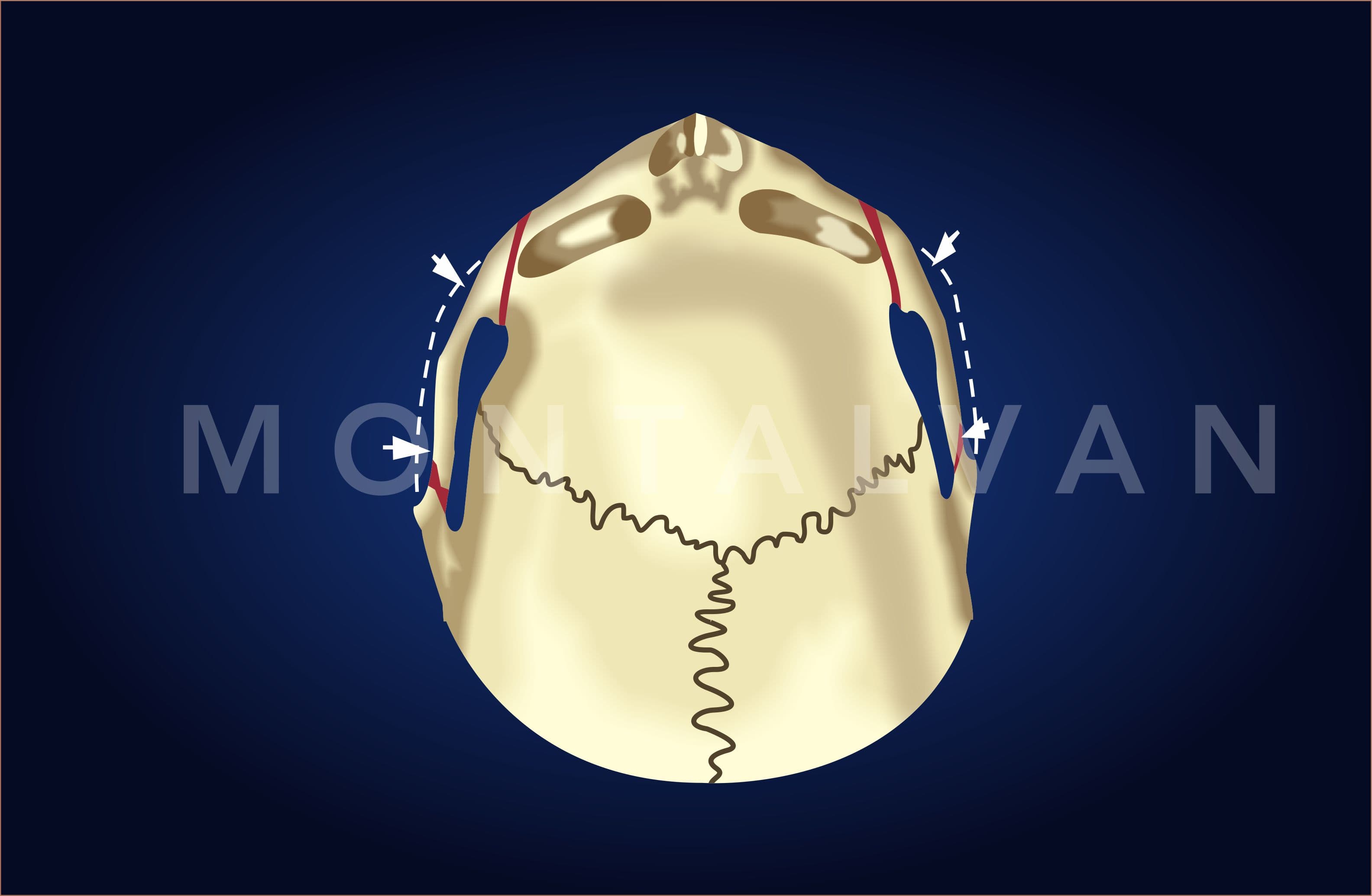
Zygomas being shifted inward in order to narrow the face. White arrows show the direction where zygomas move after inward maneuver. With this maneuver, the face narrows in about 3/4 inches improving the facial contour.
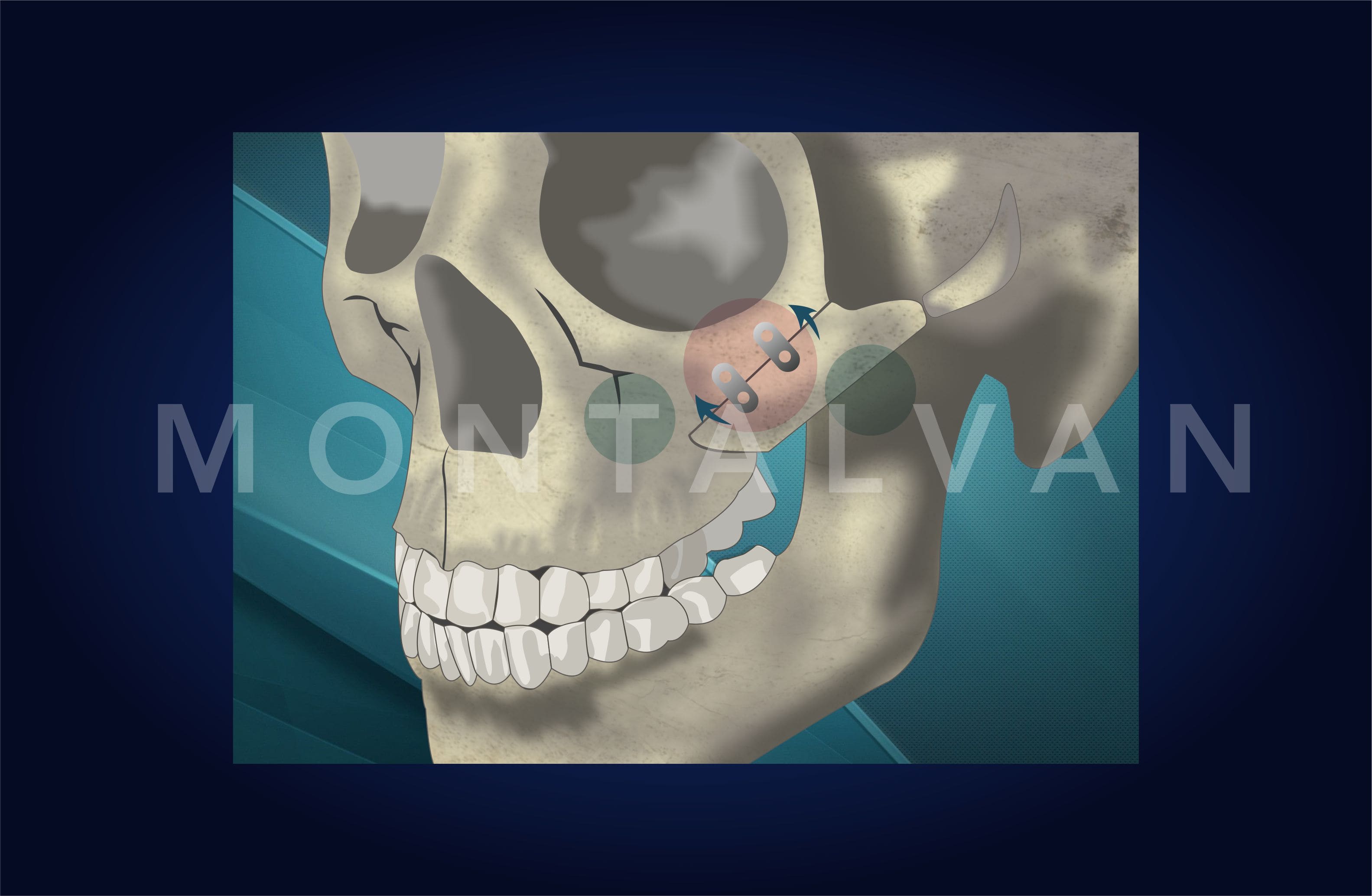
After zygomas have been moved inward and face narrowing has been attained, titanium minplates and screws are used to fix the remaining bones. Titanium screws and miniplates will remain on the bones since they’re biocompatible.
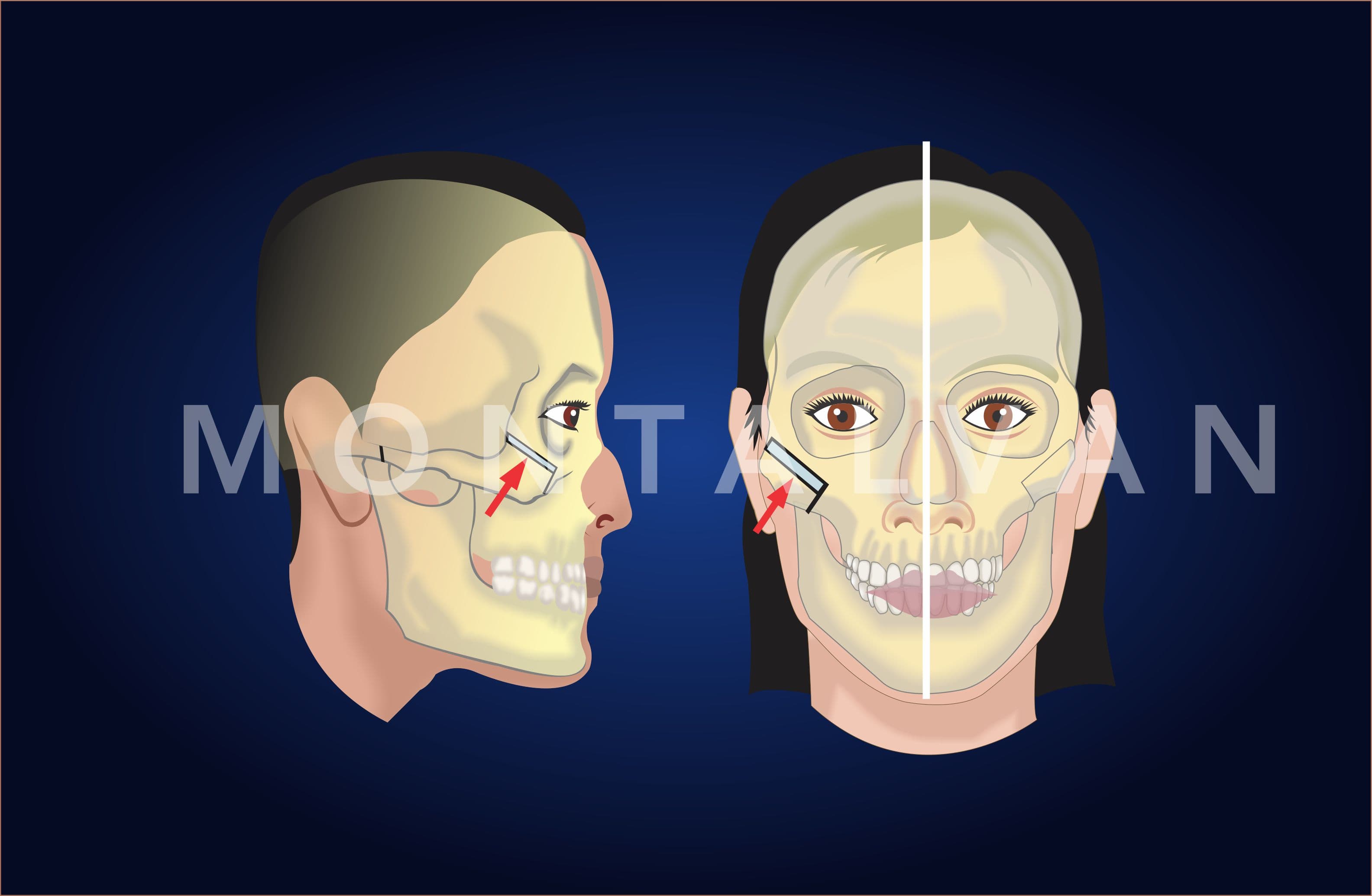
“L” shaped osteotomy in the zygomas. After removal of part of the bone (marked in light blue), the zygoma is moved inward to narrow your face. This osteotomies are necessary to attain an effective face narrowing.
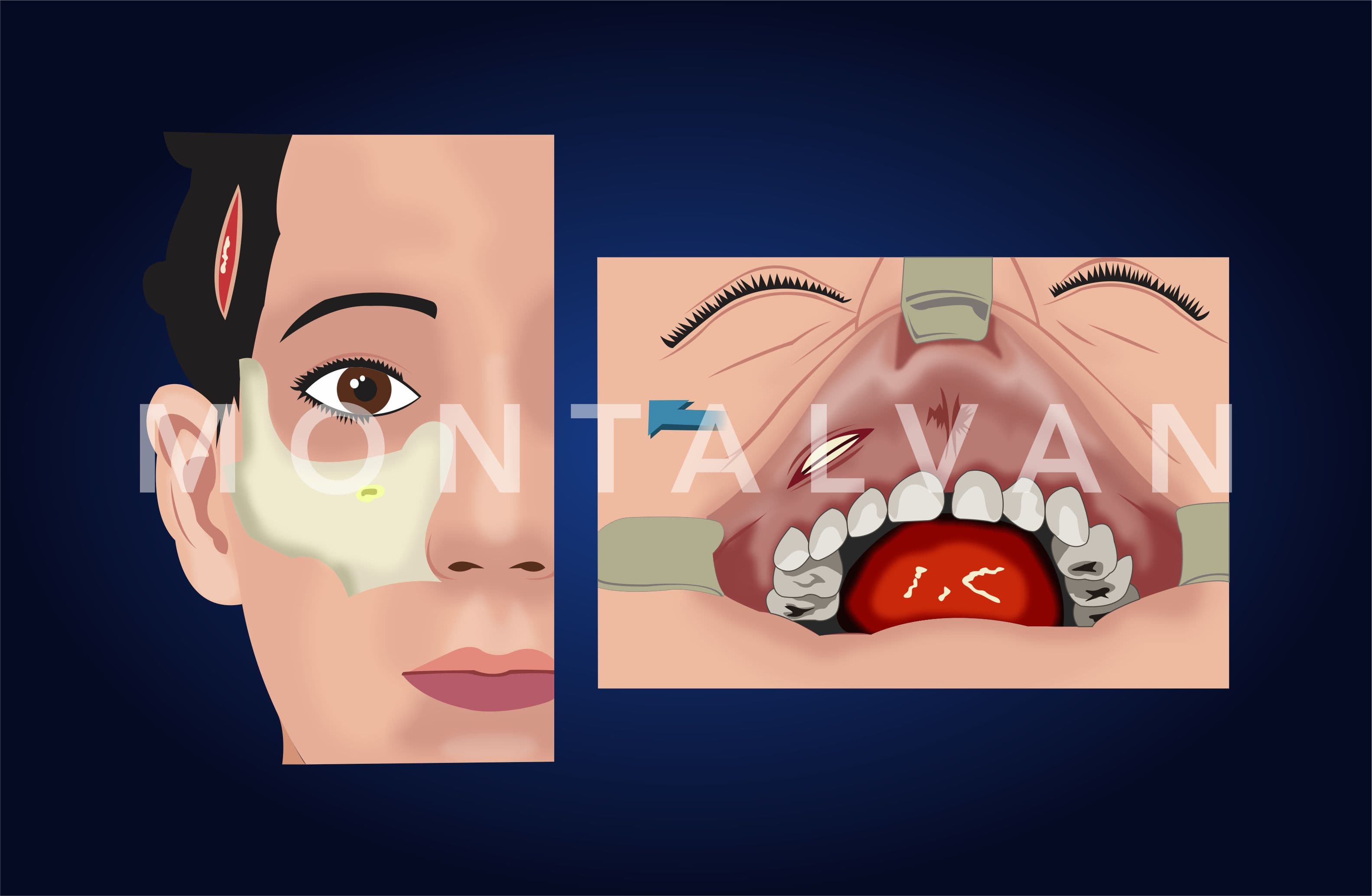
Intraoral approach to reach the cheekbones. With this incision, we operate the cheekbones and lift the facial deep muscles to lift them up after reduction malarplasty.
ENDOSCOPIC-ASSISTED MIDACE LIFT
To prevent mid-face sagging after cheekbone reduction, we perform and endoscopy-assisted mid-face lifting. To access facial deep muscles, the surgeon will make a small incision in your temples. Your mid-face will be eficiently lifted and suspended.
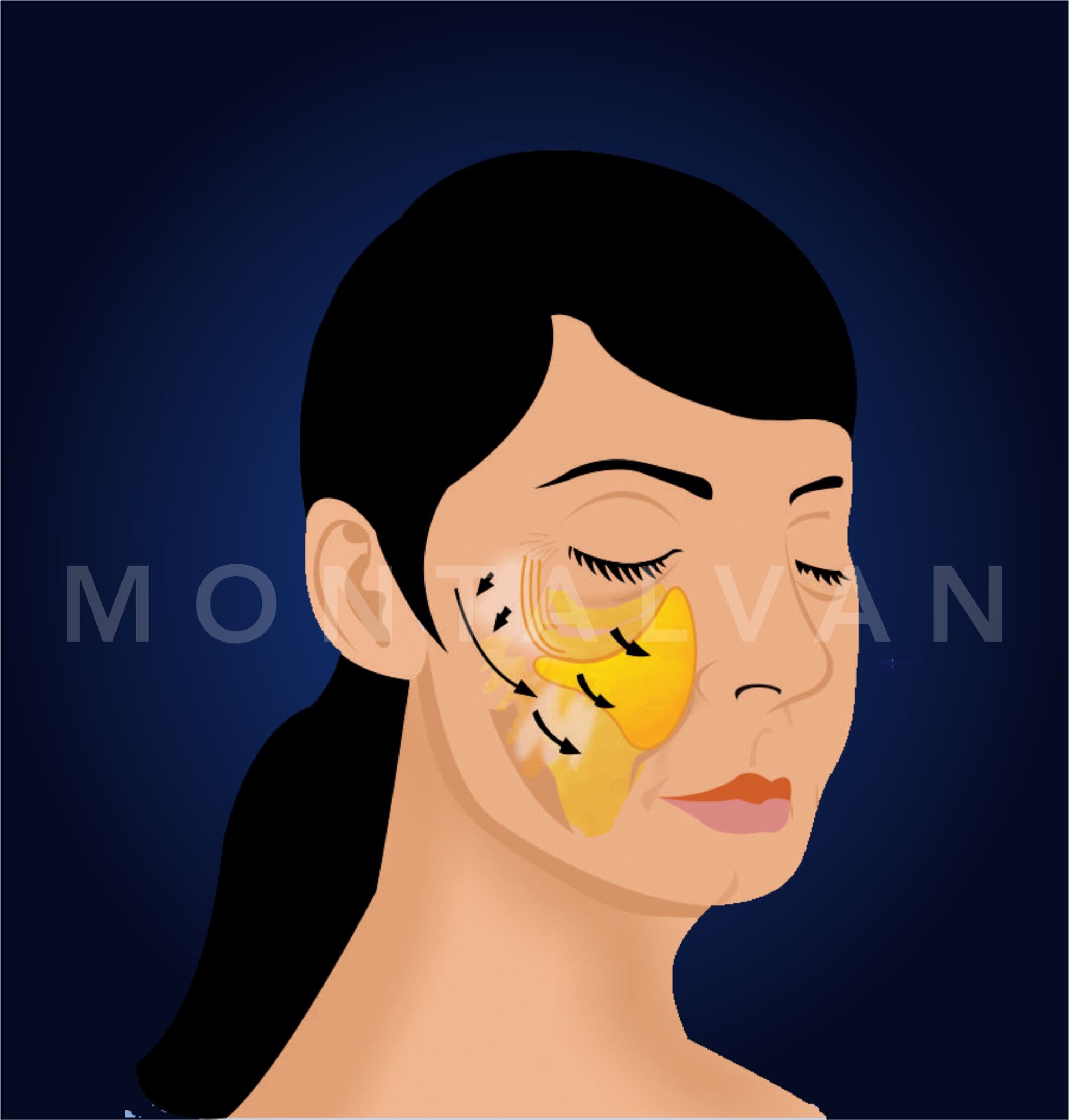
Midface sagging occurs after cheekbone reduction.
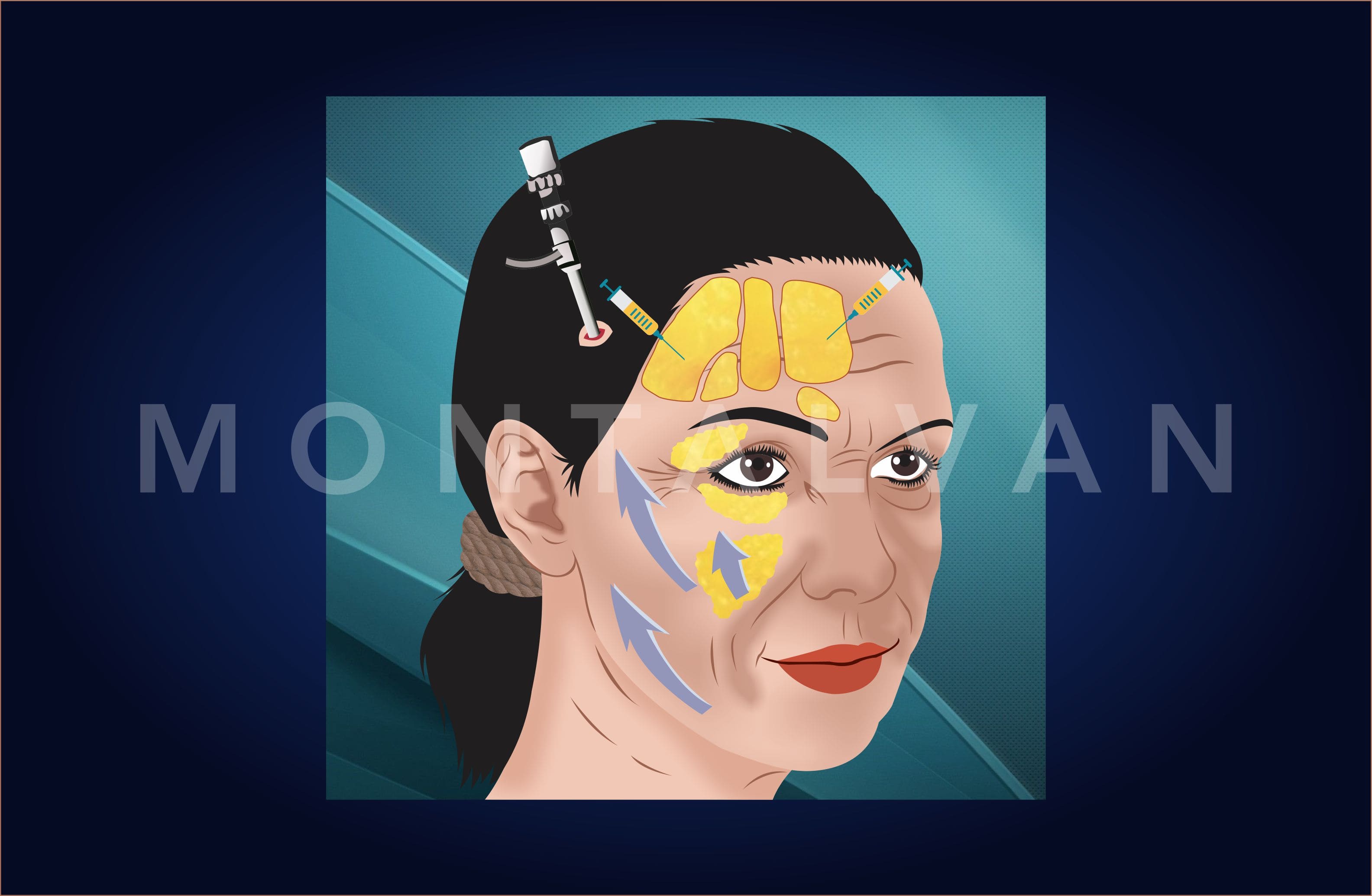
Endoscopic Midface Lifting Through a very small incision on the temples, we introduce a small video camera. Then, under direct vision, we operate facial deep muscles to lift the midface in order to prevent midface drooping.
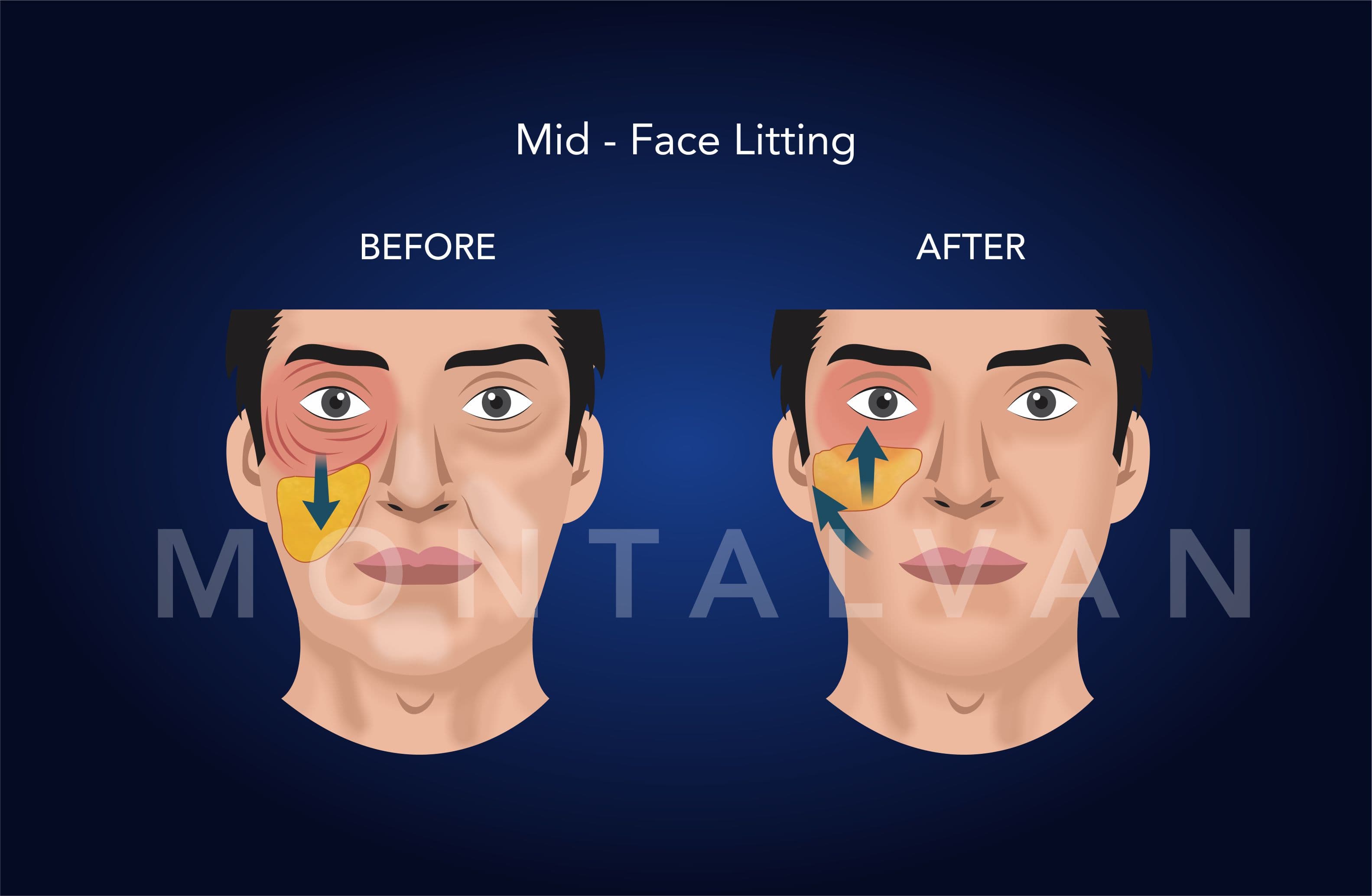
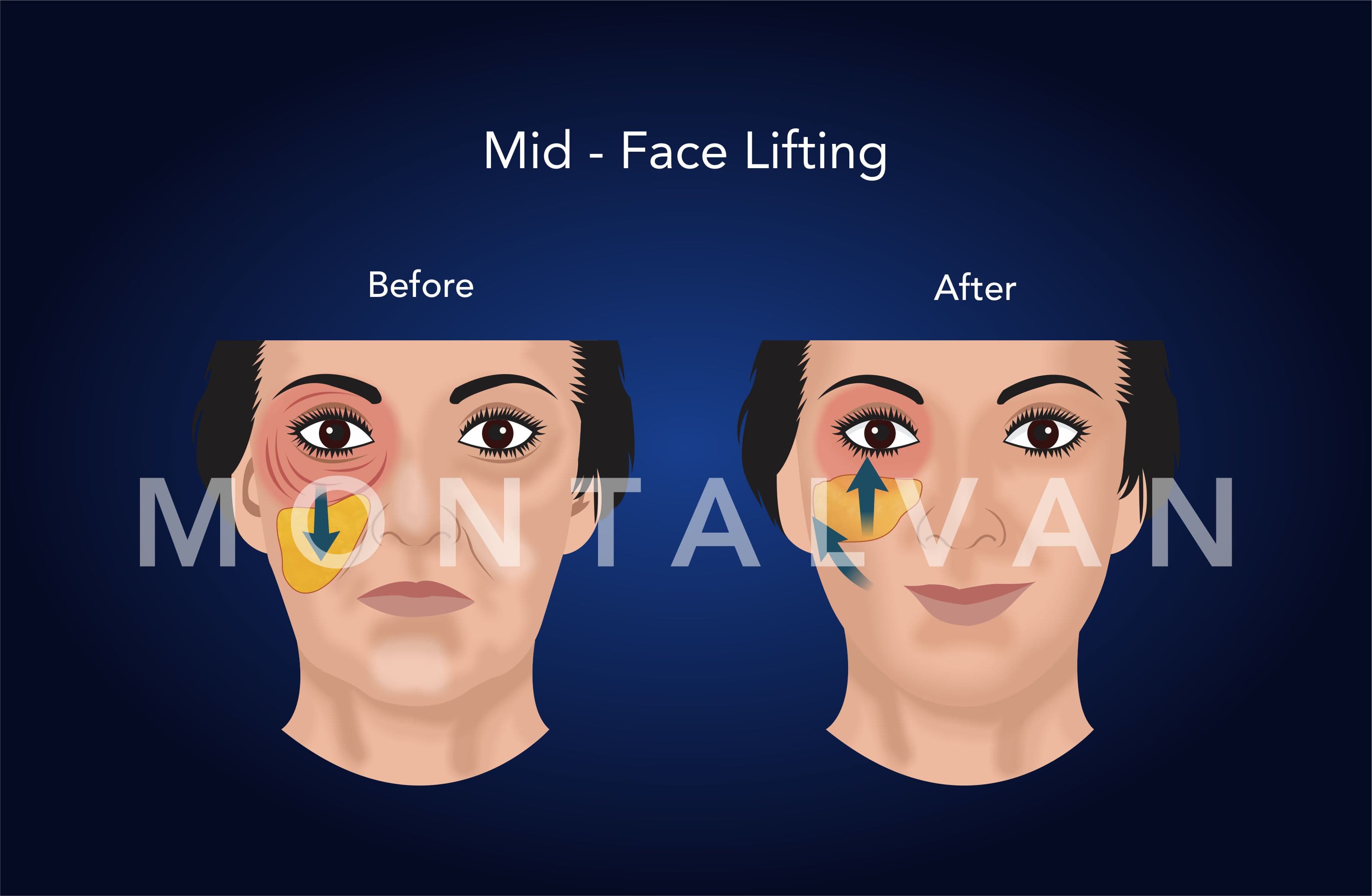
Mid-face being lifted to prevent mid-face sagging after cheekbone reduction surgery.
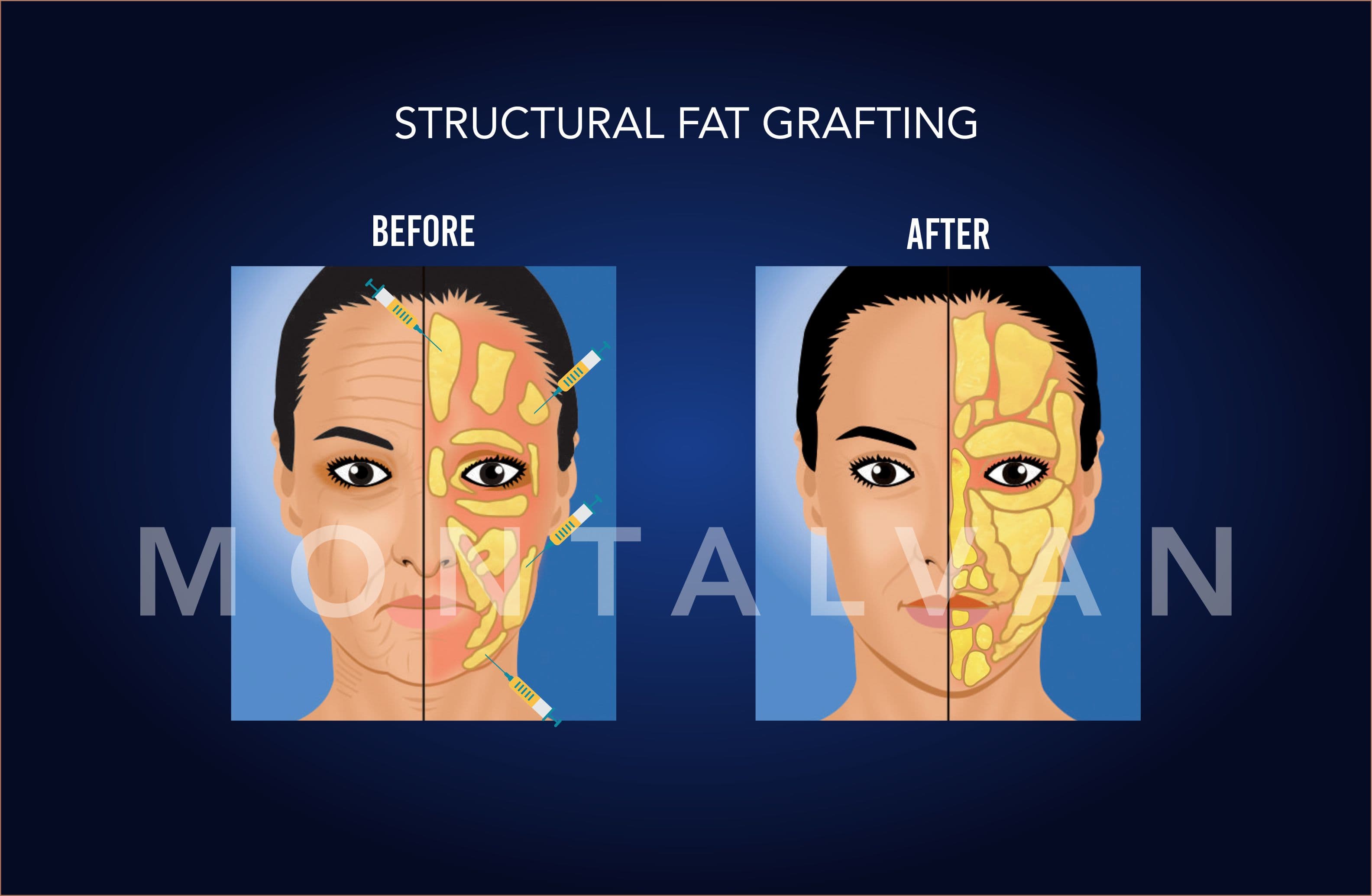
To improve facial contour, we do structural fat grafting.
Consultation
During your consultation, your surgeon will assess the width and size of your cheekbones. A 3-D cat scan will show your surgeon the accurate size of your cheekbones. Your surgeon will determine the benefits of reducing your cheekbones and will explain you the procedure. For cheekbone reduction, an "L" shaped cut is made in your cheekbone in order to move them medially to reduce the width of your face as shown in the 3-D cat scan above.
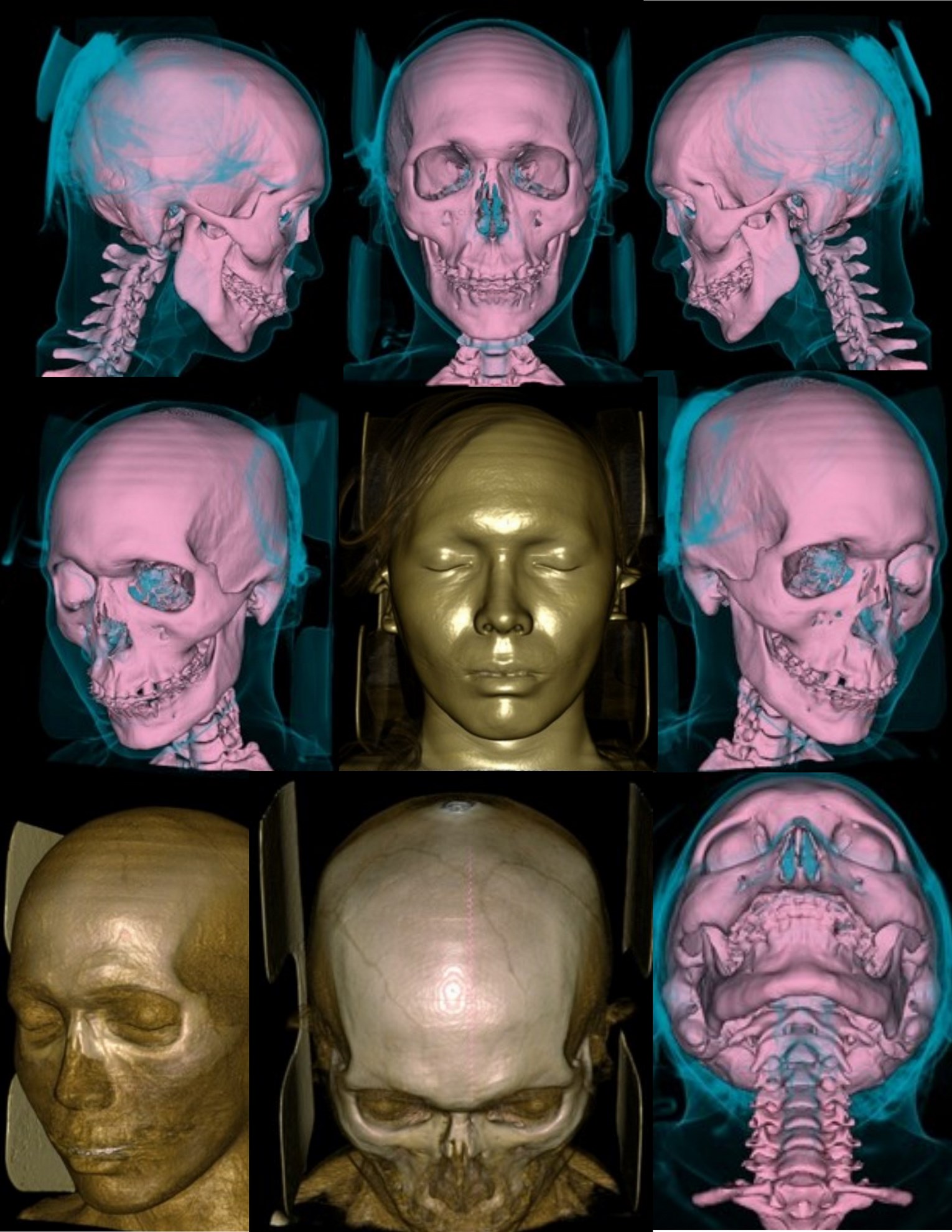
3D-Cat Scan This image test will allow your surgeon to assess your facial abones and your facial soft issues before the surgery. With this accurate information, your sureon will be able to do your individual surgical planning
Surgery
Days before Cheekbone Reduction Surgery, you will be prepared with blood tests and cardiovascular evaluation. Eventually additional screening tests may be requested.
The day of surgery you will be hospitalized. Then, you will be moved to the operating room where the anesthesiologist will apply the general anesthesia. Dr. Montalván will make an incision to expose intraoral and extraoral excess of cheekbones. Then Dr. Montalván will remove excess cheekbone and refine your face. The specifics of each individual case will be explained during your interview with Dr. Montalván. Finally, the incision will be closed and you will be moved to recovery room and then to a hospitalization room. You will remain hospitalized for one or two days.
Recovering
After surgery your face will be swollen for a few weeks. Anti-inflammatory treatment support and antibiotics to prevent infections will be prescribed. Your surgeon will do your follow up to check on the evolution of your swelling. During this, you should stay away from the sun and heat. After three weeks you'll be discharged. If you come from out of town, don't make any travel plans until then.
Notice
Cheekbone Reduction Correction Surgery has the same risks of any surgical procedure performed with general anesthesia. Dr. Montalván will request all pertinent tests to consider all evidence relevant to assessing the health status of the patient and prevent any complications.







 drluismontalvan@gmail.com
drluismontalvan@gmail.com +51999927779
+51999927779